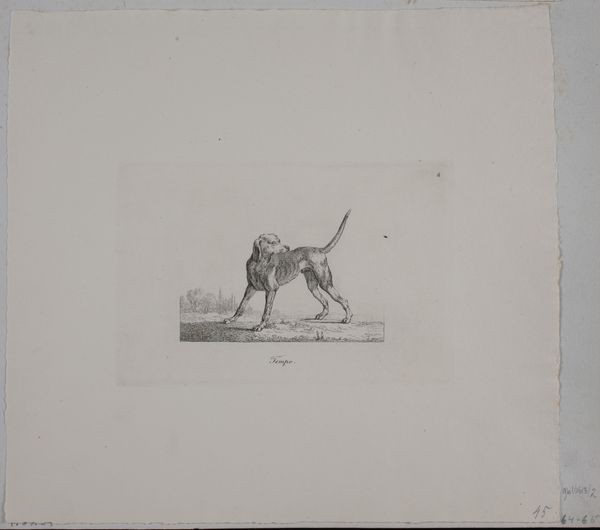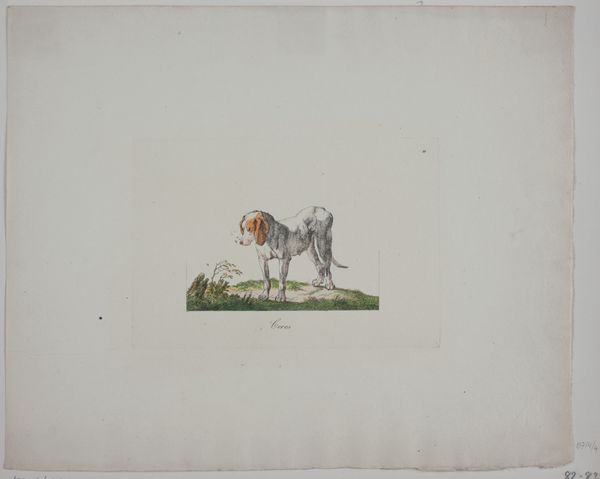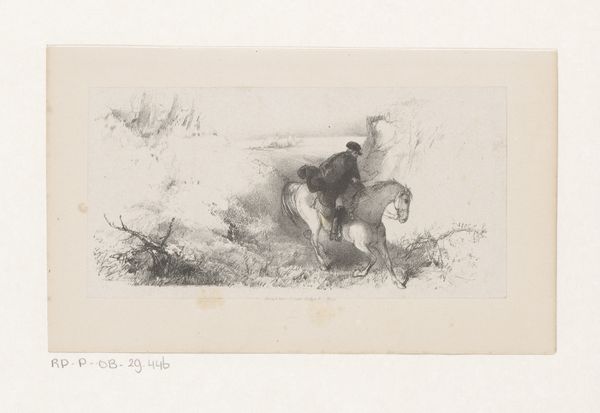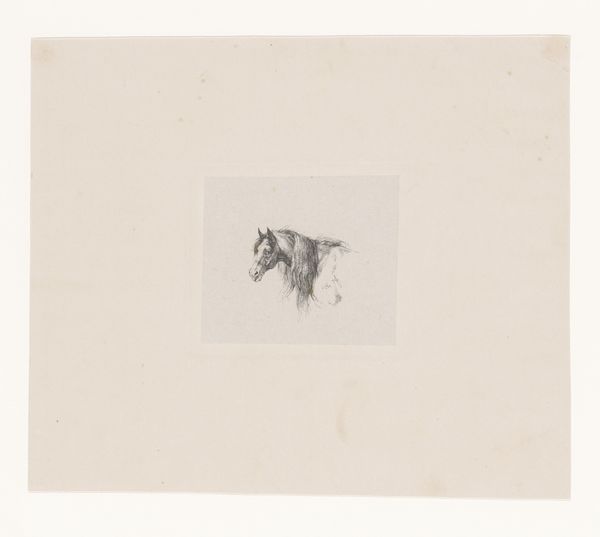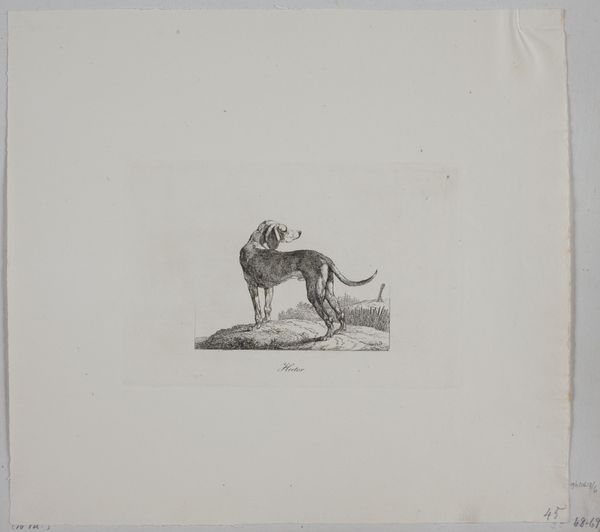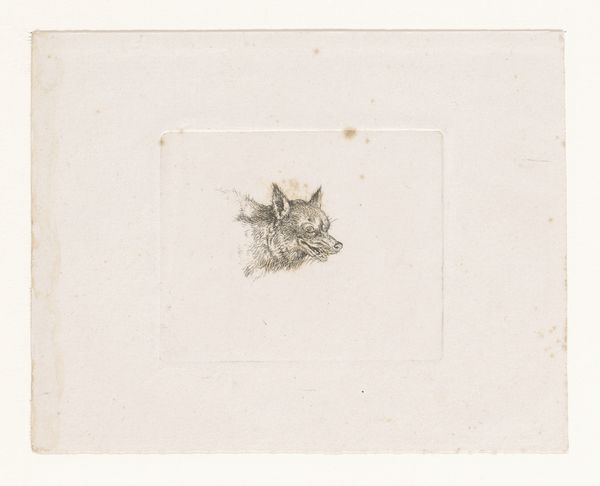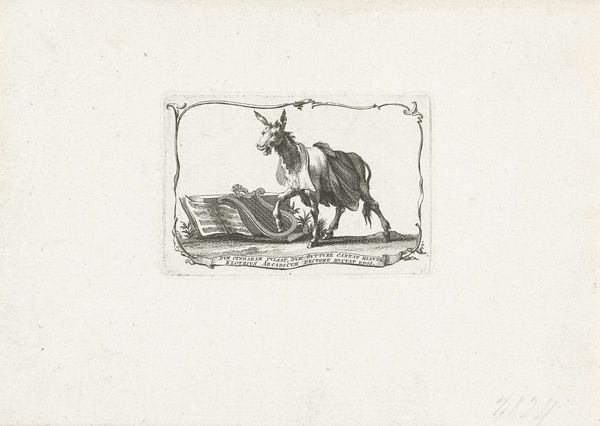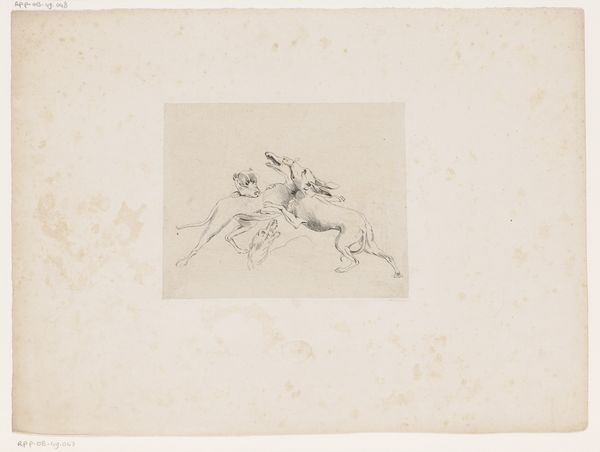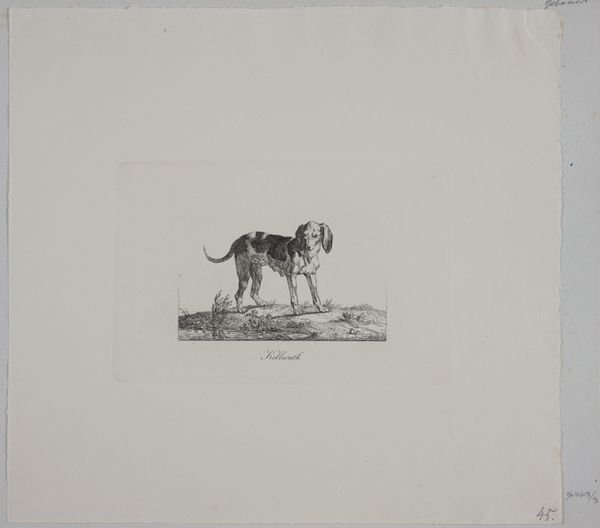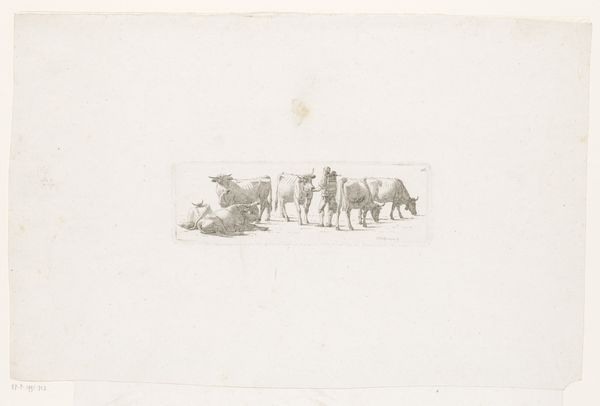
drawing, coloured-pencil, paper, watercolor
#
drawing
#
coloured-pencil
#
water colours
#
animal
#
paper
#
watercolor
#
coloured pencil
#
watercolour illustration
#
genre-painting
#
watercolor
Dimensions: height 243 mm, width 360 mm
Copyright: Rijks Museum: Open Domain
Curator: It's interesting how spare and unassuming this drawing, "Hond Acteon," by Anna Cornelia Moda is. I'd place it around 1679. It's executed with watercolor and coloured pencil on paper. What are your initial impressions? Editor: There’s a certain quiet dignity about it. It reminds me of those formal portraits, but…of a dog. And the washes of colour feel so delicate. It's simple but the colours are beautiful, which gives it a certain gravity that I like. Curator: That "quiet dignity" is exactly what I see too! Consider the materials. The artist deliberately uses such a fragile combination to portray a noble pet: paper, watercolour, coloured pencil, all demanding meticulous application. The labour that went into portraying this animal is clearly appreciated by the artist herself. Editor: Absolutely! The artist is positioning domestic animals within a pictorial lineage more frequently afforded to humans. What kind of societal values does that suggest? Is it commentary on class, the growing merchant class and their ability to have this portrait, or simply a sentimental rendering of a pet? Curator: Both readings are plausible and not mutually exclusive. What is fascinating to me is how Moda challenges a distinction between 'high art'—grand portraiture—and the domestic 'craft' by using expensive pigments to document a creature whose labour served in leisure activities, demonstrating considerable affluence through material terms. Editor: Indeed, Moda subtly positions the artwork and subject within this sphere. Furthermore, looking at who commissioned it, or owned it through time, adds more to this contextual dimension; considering if it was meant for public display, how this affects meaning-making in art reception history, could reveal new dimensions. Curator: Well, without those records, we’re left with only the material facts: the paper's texture, the blend of the watercolor washes, and the precision of the colored pencil marks, demonstrating affluence and technical refinement, offering a story about the labour behind displaying domestic comforts. Editor: And within those details is a wider cultural history bubbling to the surface. A small, unassuming picture that opens to an examination of Dutch society in the late 17th century.
Comments
No comments
Be the first to comment and join the conversation on the ultimate creative platform.
